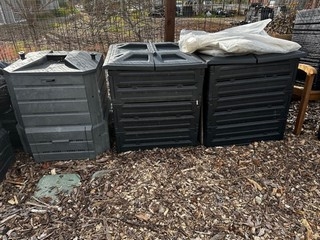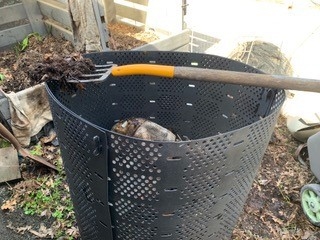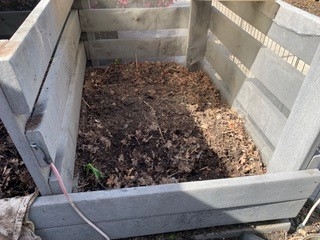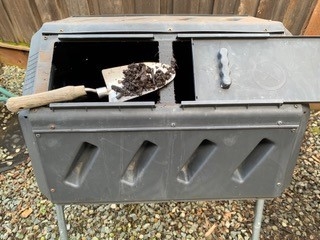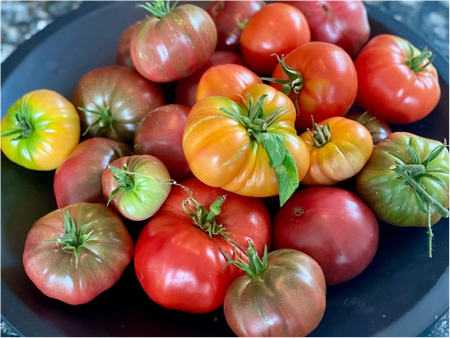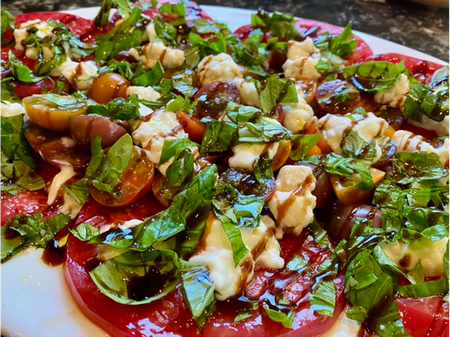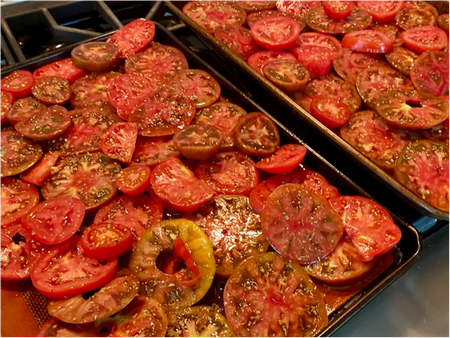From the UC Blogosphere...
Gardeners With Heart: Fostering Diversity, Equity, and Inclusion
Watch video on YouTube here: https://youtu.be/4W_CYgEmNF8
As we bring National Volunteer Month to a close, we are honored to highlight a group of outstanding UC Master Gardener volunteers who have been nominated for their work in promoting diversity, equity, and inclusion (DEI) within their communities. These UC Master Gardeners have demonstrated a dedication to creating a more inclusive environment in gardening and volunteerism. Join us as we celebrate these inspiring Gardeners with Heart for their invaluable contributions to fostering diversity and equity in gardening and beyond.
Kathy Kaplan, a UC Master Gardener of Santa Clara County, embodies the spirit of inclusivity and effective volunteer leadership. She cultivates a welcoming and inclusive atmosphere, ensuring everyone feels heard and valued. Kathy created and helps run “The One World Kitchen Garden” at the Martial Cottle Park Demonstration Garden. The “One World Kitchen Garden” demonstrates growing edible plants embraced by the many cultures represented across Santa Clara County, showcasing the rich diversity in our local communities. To promote inclusion in the program, Kathy intentionally plans two weekly demo garden workdays, one during the week and one on weekends, to accommodate MGs with different employment statuses and schedules.
Linda Mansell, Julie Avis, Guma, Kim Jacobs, and Rudolfo Milito form a dynamic team within the UC Master Gardener Program of Sonoma County that supports its DEI efforts. This team's extensive work translating resources into Spanish has expanded access to gardening knowledge and resources for Spanish-speaking communities across California. Each month, the team translates its gardening advice column in the Press Democrat for use in the Spanish column, La Prensa, offering seasonally relevant advice on sustainable gardening and increasing awareness of the program and resources throughout Sonoma County. The county's Spanish website features links to videos they have produced in Spanish on multiple gardening topics. The team translated video scripts from English and reviewed them for cultural appropriateness. The team volunteers at events in the Latino community, distributes documents in Spanish, and answers questions. All of the UC Master Gardener projects in Sonoma County and across California benefit from the contributions of the Spanish translation team!
Debbie Spurling, a UC Master Gardener of Sutter-Yuba, has demonstrated dedication to promoting diversity and inclusion within her local program. As project leader for the UC Master Gardener training program, Debbie worked alongside several counties to determine best practices for volunteer recruitment. She ensured those elements were used in the volunteer advertising and interviewing process. Debbie also spearheaded a new mentorship program in the county to improve retention of new volunteers. This program was inspired by her own class graduating and experiencing a feeling of not being included in the larger population. She vowed that this would not be something other trainees would feel moving forward. At every step of developing and running the mentorship program, Debbie has worked to ensure that decisions were made through the diversity and inclusion lens, including in choosing a diverse selection of speakers. The mentorship program has gotten rave reviews from new UC Master Gardeners who say they have felt more included and welcomed.
We are immensely grateful for the dedication, passion, and hard work that Kathy Kaplan, Linda Mansell, Julie Avis, Guma, Kim Jacobs, Rudolfo Milito, and Debbie Spurling have demonstrated in promoting diversity, equity, and inclusion within the UC Master Gardener community. Their collective efforts have enriched the lives of individuals and families, fostering a more inclusive and equitable environment for all. As we celebrate National Volunteer Month, let us extend our heartfelt appreciation to these Gardeners with Heart for their invaluable service and commitment to creating a more diverse and inclusive world.
About National Volunteer Month and Gardeners with Heart
During National Volunteer Month (April 1 - 30), the UC Master Gardener Program celebrates its incredible volunteers and their contributions to California communities. Gardeners with Heart were identified by local county leadership as diversity, equity, and inclusion leaders because of their commitment to building connections with community-based organizations and underrepresented communities. Join us in honoring their dedication and passion for making a difference in the lives of others. If you would like to get involved and learn more about gardening in your community, you can find your local program here.
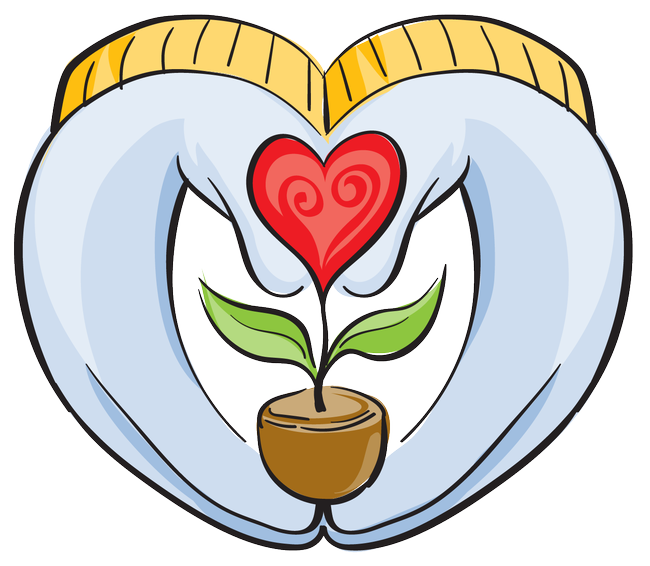
MG with heart color logo blue gloves gold trim
Composting for the Home Gardener
We have all heard of this magical stuff called compost. But what is it? Where does it come from? Why is it so important for our gardens? The reason compost is so important is because it enriches our soil, adding important nutrients that are used by plants for growth. When we create compost, we are breaking down organic matter into a form that provides a rich amendment for the soil and promotes healthy microbial activity. With these nutrients, plants can better resist disease and insects. In addition, compost increases water retention and helps reduce soil diseases. And it can be rewarding to make your own!
What do you need for great compost?
Green material—Yard waste, kitchen vegetable scraps, coffee grounds, or fresh grass clippings. This fresh waste provides the compost's nitrogen content. Do not add meat, dairy products, oil, fat, or dog or cat manure.
Brown material—Dried leaves, torn up newspaper, pieces of cardboard boxes, or shredded paper bags. This dry material provides the carbon content. The smaller you cut the pieces, the faster the composting process will be.
How much of each—Start with equal parts of green and brown material and add up to twice as much brown material as green. Don't use more green material than brown.
Water—Water each layer of the pile to the level of a wrung out wet sponge. If the bin is exposed to rain and gets too much water, you might need to cover it.
Air—Turn the pile every few days, if possible, but at least once a week for air circulation. A pitchfork works well for turning. In addition to letting the pile “breathe”, it helps prevent problems with flies and rodents. Turning the pile helps maintain an optimal temperature, while mixing prevents dense clumping of some materials such as wet green grass.
Temperature—Heat in the pile is generated by bacteria feeding on the green material. Temperatures above 140°F will kill many pathogens and weed seeds and will also accelerate decomposition for faster composting (see below). A compost thermometer with a long probe gives good information about when to turn the pile and when to water it.
Different methods of composting—Factors to consider when choosing a method include the time and energy needed to maintain the pile, the amount of compost needed, and the time needed to achieve the finished product. The pile needs to be at least 3 feet square to generate enough heat for decomposition. You can build the compost pile right on the ground but if you build a structure to contain the pile, it should be 3–5 feet with one side open for easy access to build or turn the pile. Sun or shade does not matter as the temperature of the pile depends on its composition, not exposure to the sun. Other composting containers can include a closed container, like a rolling barrel, or an open bin composter. There are many ways to make compost: underground, above ground, in bins, in boxes, in pits, in bags, in barrels, in strips, in sheets, and in trenches.
Slow composting method (easy but slow)—Continuously add materials to the pile with little or no chopping of materials. Bury ‘green' scraps 6–12 inches in the center of your bin to reduce attracting flies and rodents. Turn and water as desired for finished compost in 12 to 18 months.
Intermediate composting method (a little more work but faster)—Build a 3' x 3' x 3' pile with materials cut into 2-inch pieces. Turn and water the pile weekly without adding more material to get finished compost in 3 to 8 months.
Fast composting method (the most work but finished fastest)—Build a 3' x 3' x 3' pile with materials chopped to ½ to 1½ inch pieces. Check the temperature of the pile every day with a thermometer in the center of the pile. Turn the pile immediately if the temperature is 150 degrees F or above. Turn and water daily while the pile is between 140–150 degrees F. As the pile cools, turn it whenever it reaches 120 degrees F. Once the pile cools below 120 degrees F, turn and water every week for finished compost in 6–8 weeks.
When is the compost done? The pile will shrink, losing about 1/3 of its volume. It will be dark brown and crumbly with an earthy smell. You should no longer be able to tell what each of the individual ingredients was. Allow compost to age for two weeks before you add it to the soil around plants. Or incorporate it into the soil, but don't sow seeds or transplant seedlings for two weeks.
For more details about composting and what materials to use:
https://sacmg.ucanr.edu/files/163139.pdf
For information about how to use compost in the home garden:
https://ucanr.edu/sites/ccmg/files/221120.pdf
This video is from our own composting experts at our demonstration garden in Walnut Creek: https://www.youtube.com/watch?v=E77Yps9K2bw The garden is open to the public on Wednesday mornings April through October. Please stop by and ask questions.
We hope to see you at Our Garden!
Help Desk of the UC Master Gardeners of Contra Costa County (JRB)
Gardeners with Heart: Sustainable Landscape Stewards
Watch the video on YouTube here
As we continue our celebrations of National Volunteer Month, we're excited to spotlight a remarkable group of UC Master Gardeners dedicated to nurturing vibrant habitat gardens, promoting biodiversity, and advocating for sustainable landscaping practices. These exceptional UC Master Gardeners have transformed not only gardens but also mindsets, fostering a deeper appreciation for native plants and pollinators within their community. Join us as we celebrate and express our gratitude to these outstanding "Sustainable Landscape Stewards" for their unwavering commitment to enhancing urban biodiversity and promoting environmental stewardship.
Sam Foushee, Sally Hughes, and Jennifer Cardoza, tackled the challenge of revitalizing a plot near the vegetable trials garden at the Lake Merrit Trial Garden in Alameda County into a sanctuary for native bees. Their dedication and vision have created an oasis of biodiversity focused on plants that attract, shelter and feed native bees. The garden has expanded multiple times including preserving and protecting species of native plants to promote biodiversity. This project has inspired others and helped UC Master Gardeners build a deeper understanding of planting for pollinators and overall biodiversity that they have been able to share within their communities.
Birgitt Evans, helped the Lake Merrit Trial Garden grow and expanded its efforts by focusing on creating habitat areas tailored to the needs of butterflies. Her contributions have been instrumental in supporting monarch butterflies and fostering habitats for a diverse range of butterfly species, aiding in the conservation of these vital pollinators.
Jane Margold has taken the Lake Merrit Trial Garden Project to the next stage leading a citizen science project that monitors which plants attract which types of native bees and other pollinators. When completed, this information will be available to inform local native plant gardeners in making plant selection decisions to promote pollinators in Alameda County's microclimate.
Lindy Kauffman, an exceptional leader, spearheaded the establishment of educational sustainable gardens across Mariposa County. Lindy has overseen the design and installation of gardens showcasing swales to control water, sustainable mulching methods, and the use of climate-adapted plants. These gardens serve as educational resources for volunteers and the community alike. Lindy organized a cohort of UC Master Gardeners and AmeriCorps volunteers and collaborated with county, Chamber of Commerce, and other volunteer organizations to design and install a sustainable landscaping garden with more than 100 locally adapted plants.
Ann Northrup, leverages her background in plant pathology and has been integral to the success of Santa Clara County's online Plant Clinic. Her expertise and dedication to serving home gardeners has provided invaluable support, especially during the transition to virtual clinics amid the challenges posed by the COVID-19 pandemic. Through her commitment, the online Plant Clinic continues to thrive, reaching and benefiting an ever-expanding number of participants.
As we celebrate National Volunteer Month, let us extend our heartfelt appreciation to Sam Foushee, Sally Hughes, Jennifer Cardoza, Birgitt Evans, Lindy Kauffman, and Ann Northrup. Their tireless efforts and passion for sustainability have enriched our landscapes and inspired others to join in the collective endeavor to preserve and protect California's natural resources.
About National Volunteer Month and Sustainable Landscape Stewards
During National Volunteer Month (April 1 - 30), the UC Master Gardener Program celebrates the extraordinary contributions of its volunteers to promoting sustainable landscaping practices and biodiversity conservation. Sustainable Landscape Stewards volunteers were nominated for their outstanding work in creating and maintaining habitat gardens, fostering urban biodiversity, and promoting environmental stewardship. Join us in honoring their dedication and passion for making a positive impact on the environment and the community at large. If you would like to get involved and learn more about sustainable landscaping practices in your community, you can find your local program here
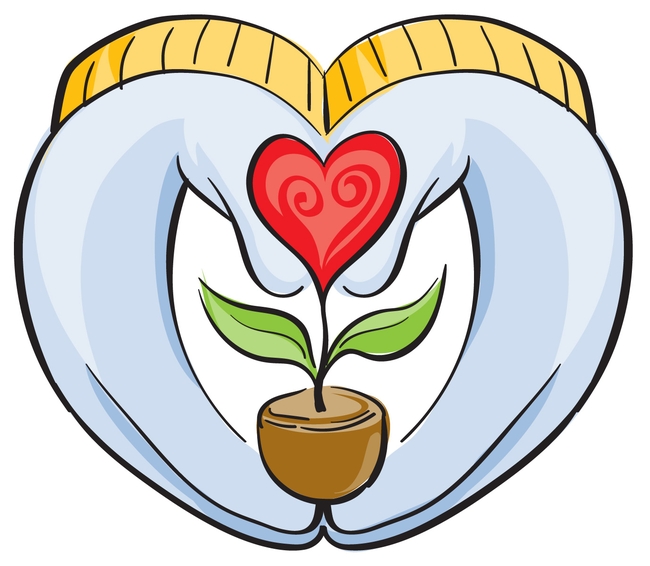
MG with heart color logo blue gloves gold trim
Gardeners With Heart: Volunteers Making a Difference in Community Outreach
Watch the video on YouTube here: https://youtu.be/K66uOuYtLkQ
We are halfway through our celebration of National Volunteer Month and are delighted to highlight UC Master Gardeners who have demonstrated extraordinary dedication to community outreach and communication efforts. These volunteers have worked to enhance the visibility of the UC Master Gardener Program, engage with new and diverse audiences, and foster gardening connections within their communities. Join us as we recognize these outstanding individuals for their commitment to making a positive impact on the lives of others!
Linda Griffith, a dedicated UC Master Gardener in San Luis Obispo County, has demonstrated a commitment to lifelong learning and effective communication. Her initiative to launch and develop a YouTube channel for her local program, featuring instructional videos on various gardening topics, has greatly expanded outreach and engagement. Linda's clear and concise communication style has made complex gardening concepts accessible to a broader audience, resulting in increased viewership and subscriber numbers. Her contributions to the program's outreach efforts through digital media have enriched the gardening community not only in San Luis Obispo County but across California.
Shelia Skemp, a UC Master Gardener in Glenn County, has wholeheartedly embraced every opportunity to contribute. All ideas and activities suggested by Sheila are very much focused on ways to publicize the program. She was able to create a banner showcasing UC Master Gardeners and their help-line plant clinic, and have it displayed prominently over Highway 32 in downtown Orland twice a year. Additionally, Shelia created an engaging activity book for children about plants and gardening, distributed with crayons featuring UC Master Gardener contact information. Her innovative ideas and proactive approach have made a significant impact in Glenn County.
Michele Nowak-Sharey, a UC Master Gardener volunteer in Mariposa County, has quickly become an indispensable member of the team, particularly in the realm of communication and outreach. Serving as co-chair of the Communications Committee, Michele works tirelessly to ensure that volunteers are well-informed and connected. Her expertise in communication has been instrumental in maintaining the VMS calendar, facilitating volunteer engagement, and promoting various events and workshops. Michele's dedication to enhancing communication channels has strengthened community connections and facilitated greater participation in all UC Master Gardener activities.
Judith MacLaren, a dynamic UC Master Gardener, has made remarkable strides in enhancing communication and outreach efforts in Merced County. Her initiative to completely overhaul the UC Master Gardener website in Merced County and initiate a monthly online newsletter has significantly increased engagement and participation in community workshops. Judith's efforts have not only doubled participation at events but have also attracted a younger and more diverse audience. Her commitment to effective communication has contributed to the program's success and growth in Merced County.
Mary Werthman, has demonstrated exceptional leadership and a commitment to promoting diversity and resilience within the UC Master Gardener Program of Santa Clara County. She created the 'Our Master Garden' internal newsletter, sending it out monthly with board and UCCE updates, upcoming projects and program goals. Her initiatives to align local programming with statewide priorities, engage diverse audiences, and strengthen collaboration with neighboring counties have been instrumental in advancing the program's mission. Mary's proactive approach to leadership and community engagement has contributed to the program's success and impact in Santa Clara County.
Debbie Westrick's leadership in communication efforts for the UC Master Gardener Program in Sonoma County has been transformative, elevating the program's visibility and engagement within the community. Her strategic approach to publicity, including establishing a monthly newsletter and forging partnerships with local media outlets, has significantly increased awareness and participation in UC Master Gardener activities. Debbie's dedication to excellence in communication has strengthened community connections and enriched the gardening community in Sonoma County.
Jan Stanley's dedication to maintaining an up-to-date and engaging public website for the UC Master Gardener Program in Solano County has enhanced communication and outreach efforts. Her proficiency in navigating website platforms and sharing information has ensured that the program remains accessible and relevant to the community. Jan's contributions to the program's online presence have facilitated greater engagement and participation in UC Master Gardener activities.
Carl Mehlhope's enthusiastic approach to community engagement and publicity efforts has raised awareness and participation throughout Solano County. His background in marketing and his proactive outreach efforts have helped to forge new connections and expand the program's reach within the community. Carl's dedication to spreading the word about UC Master Gardener activities has contributed to increased attendance at all events and on social media.
Ruth Clawson, a UC Master Gardener in Solano County, has done a deep dive into social media learning as much as she can from UC ANR resources and using that information to help elevate her county's online presence. In addition to working on social media, Ruth has also been instrumental in keeping the publicity committee moving forward. Her commitment to communication has resulted in a marked uptick in attendance at all events and return attendees to monthly events.
We are immensely grateful for the dedication, passion, and hard work that Sheila, Michele, Judy, Linda, Allen, Mary, Debbie, Jan, Carl, and Ruth have demonstrated in advancing community outreach and communication efforts within their respective counties. Their collective contributions to outreach and communications have not only helped their individual counties but also the UC Master Gardener Program as a whole. As we celebrate National Volunteer Month, let us express our heartfelt gratitude to these volunteers for their invaluable service and commitment to creating stronger, more resilient communities through gardening.
About National Volunteer Month and Gardeners with Heart
During National Volunteer Month (April 1 - 30), the UC Master Gardener Program celebrates its dedicated volunteers and their significant contributions to communities across California. Gardeners with Heart volunteers are nominated for their exceptional work in community outreach and communication efforts, highlighting their commitment to promoting gardening education and fostering community resilience. Join us in honoring their dedication and passion for making a positive difference in the lives of others. If you are interested in learning more about gardening in your community or getting involved, you can find your local program here.
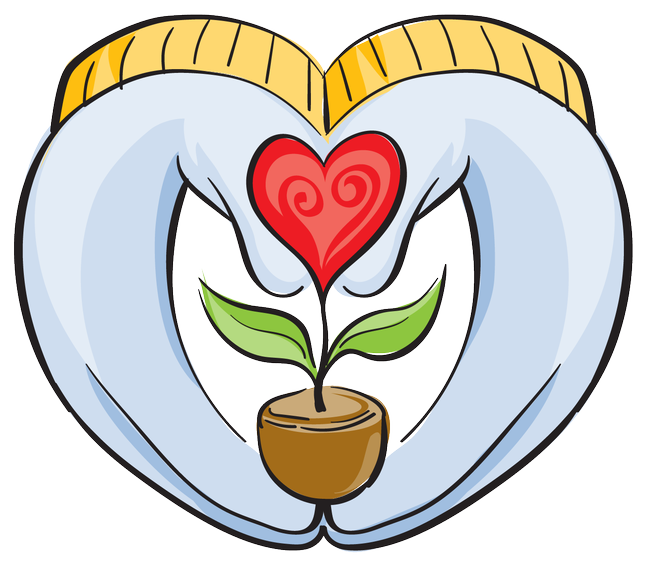
MG with heart color logo blue gloves gold trim
You Can't Choose a Bad Tomato
The 2024 Great Tomato Plant Sale is just around the corner, from April 13 to April 27, in three locations this year: Walnut Creek, Antioch and Richmond. This year's sale will feature 67 varieties of tomatoes chosen not only for flavor, but also for their ability to thrive in our Contra Costa County climate. Whether you're growing in beds or containers, in the heat of East County, the cool fog of West County, or somewhere in between, the Great Tomato Plant Sale will have a variety that will work great for you!
With so many choices, how do you know where to start? One possibility is to think about how you plan to use your tomatoes. Do you want to eat them straight off the vine? Do you imagine using them in fresh salads or hearty sandwiches? Maybe you want to make sauce or tomato paste, or are thinking about roasting, canning, or frying them. For those of you with certain culinary goals in mind, remember that tomatoes can be specialists. Each has its own unique flavor ranging from sweet and fruity to acidic and tangy. Some are meaty, some juicy, some sturdy enough to slice for a sandwich. Here are some of our favorites.
Fresh Snacks
Pop them in your mouth as “garden candy” or add to a salad or skewer. Cherry and grape tomatoes or small fruited slicer tomatoes are perfect for bite-sized snacks, kebabs, or including on a vegetable tray.
• Orange Paruche—it glows a brilliant, neon orange. One inch round fruits are thin-skinned and crack-and-disease-resistant with a superb flavor.
• Black cherry—dusky purple-brown grape-like 1” tomatoes with a rich, complex flavor.
• Sun sugar—very sweet, fruity-tasting orange cherry tomatoes in long clusters on vigorous plants.
• Tommy Toe—bright red and prolific with excellent flavor and plenty of juice.
• Yellow pear—wonderful in salads or as garden candy with a delightfully sweet flavor.
Salads and Sandwiches
Slicers, some heirloom tomatoes, and beefsteak tomatoes all have varieties that are delicious when eaten fresh. Their high water content means they are not the best for cooking, but they hold together well, making them ideal for sandwiches. And they come in a variety of colors to add exuberance to a salad such as the Caprese. Your choices will depend primarily on your growing conditions and your personal flavor preferences.
• Early Girl—4- to 6-ounce, bright crimson fruits with a tangy flavor.
• Black Sea Man—produces early and does well in containers. With attractive marbled flesh and a rich flavor.
• Aunt Ruby's Green—1 pound lime to yellow-green fruit with a superb fruity, slightly tangy taste.
• Caspian Pink—an incredibly sweet and juicy fruit that can reach one pound or larger. Great either fresh or cooked.
• Chocolate Stripe—these large tomato plants yield a big crop of mahogany colored fruit with dark, olive green-striping.
• Paul Robeson—7- to 10-ounce, blackish brick-red fruits with a sweet and smoky flavor.
Sauce, Paste and Canning
Look for thick flesh, rich flavor, tender texture, mild acidity, and low water content. These tomatoes, often known as paste tomatoes, have been developed for sauces. They peel easily and cook well, making a thick and delicious sauce quickly. Varieties include Roma and the famous Italian cooking tomato, San Marzano.
• Granadero—attractive, bright red, 4- to 5-ounce tomatoes with very good flavor. These thick-walled fruits are ideal for fresh tomato sauces, salsas, and salads.
• La Roma III—high yields of 5- to 8-ounce plum tomatoes on healthy, disease resistant and vigorous vines.
• Big Mama—5-inch-long paste tomatoes that are meaty, easy to peel and have very few seeds.
• San Marzano—solid flesh is perfect for canning/freezing for rich pasta sauce all winter.
Roasting, Salsa
Have you ever wanted to make your own salsa? Perhaps roasting cherry tomatoes or topping tomato slices with parmesan cheese sounds like something you'd enjoy. Paste tomatoes make great salsa and all tomatoes can be roasted. Experiment, mix different types, roast and then puree them with the skins on. Toss them in with pasta, use them for sauce, or can them for next winter when you miss the flavors of summer.
You Can't Go Wrong
There's a lot more to learn about tomatoes. Some will fare better than others in the dry heat of East County; others will thrive in the cooler climate of West County. If you have limited space, try cherry tomatoes in containers or a compact determinate (bush) variety. If you want the harvest to spread out all summer, choose an array of varieties with different ripening dates, or grow indeterminate (vine) tomatoes which tend to produce all summer. Our website explains all the differences, and even provides a shopping list for planning. https://ccmg.ucanr.edu/EdibleGardening/GreatTomatoPlantSale/
Remember, you can't choose a bad tomato. Experiment and have fun!
All photos courtesy of Pamela Schroeder, Master Gardener and tomato lover.
Help Desk of the UC Master Gardeners of Contra Costa County (RDH)



